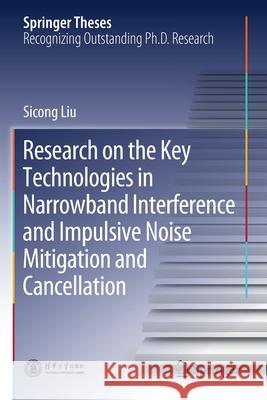Research on the Key Technologies in Narrowband Interference and Impulsive Noise Mitigation and Cancellation » książka
topmenu
Research on the Key Technologies in Narrowband Interference and Impulsive Noise Mitigation and Cancellation
ISBN-13: 9789811547263 / Angielski / Miękka / 2021 / 224 str.
Research on the Key Technologies in Narrowband Interference and Impulsive Noise Mitigation and Cancellation
ISBN-13: 9789811547263 / Angielski / Miękka / 2021 / 224 str.
cena 605,23
(netto: 576,41 VAT: 5%)
Najniższa cena z 30 dni: 578,30
(netto: 576,41 VAT: 5%)
Najniższa cena z 30 dni: 578,30
Termin realizacji zamówienia:
ok. 22 dni roboczych
Bez gwarancji dostawy przed świętami
ok. 22 dni roboczych
Bez gwarancji dostawy przed świętami
Darmowa dostawa!
This book summarizes the authors’ latest research on narrowband interference and impulsive noise mitigation and cancelation, including (i) mitigating the impacts of NBI on synchronization; (ii) improving time-frequency interleaving performance under NBI and IN; (iii) accurately recovering and eliminating NBI and IN. The complicated, random and intensive narrowband interference and impulsive noise are a serious bottleneck of the next-generation wireless communications and Internet of things. This book also proposes effective and novel frameworks and algorithms, which will significantly improve the capability of mitigating and eliminating NBI and IN in the next-generation broadband communications systems.
This book not only presents thorough theoretical models and algorithm design guidelines, but also provides adequate simulation and experimental engineering methods and results. The book is a valuable reference for those engaged in theoretical study, algorithm design and engineering practice in related fields, such as wireless communications, smart lighting, IoT and smart grid communications.











